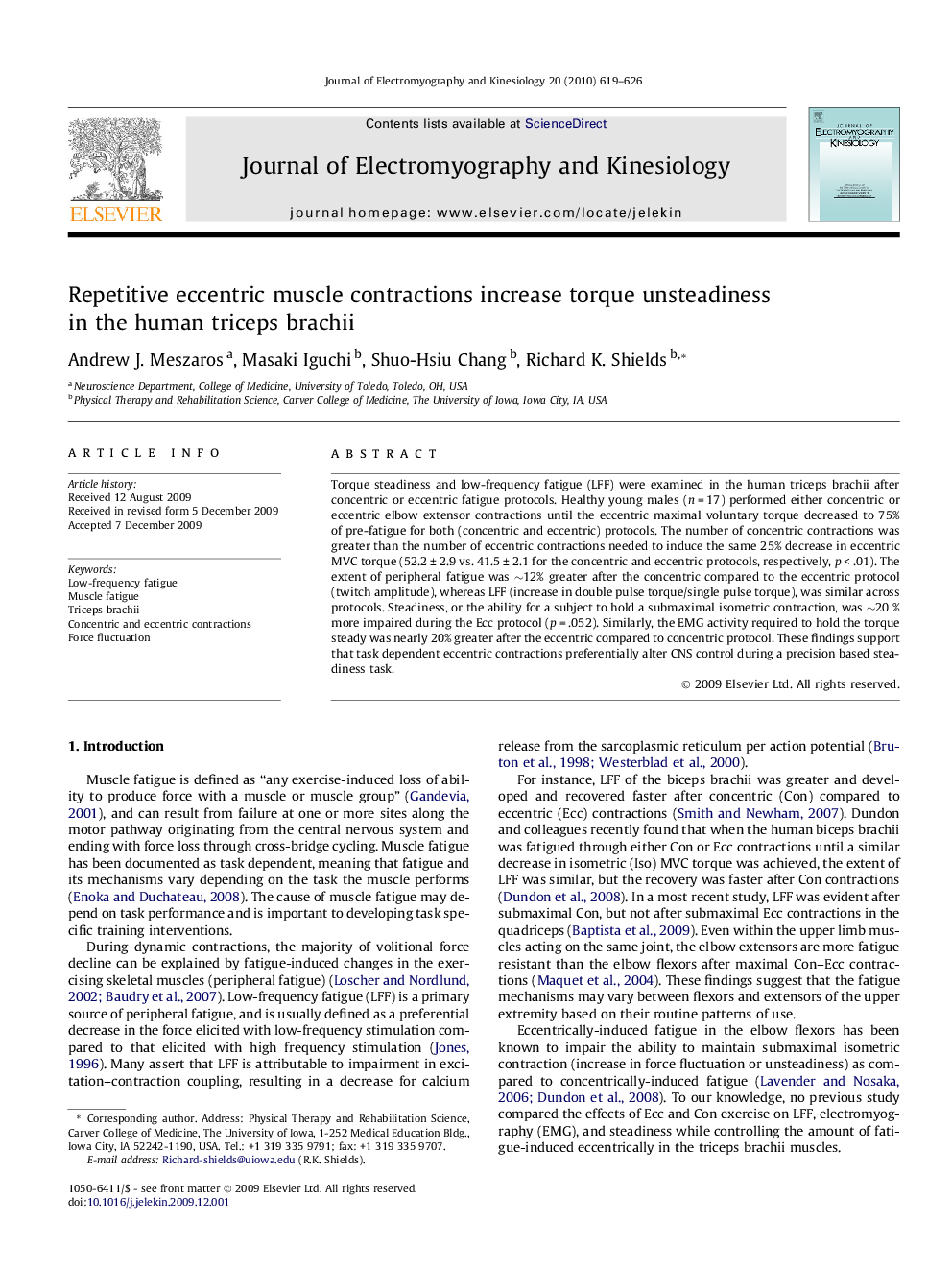| Article ID | Journal | Published Year | Pages | File Type |
|---|---|---|---|---|
| 4065159 | Journal of Electromyography and Kinesiology | 2010 | 8 Pages |
Torque steadiness and low-frequency fatigue (LFF) were examined in the human triceps brachii after concentric or eccentric fatigue protocols. Healthy young males (n = 17) performed either concentric or eccentric elbow extensor contractions until the eccentric maximal voluntary torque decreased to 75% of pre-fatigue for both (concentric and eccentric) protocols. The number of concentric contractions was greater than the number of eccentric contractions needed to induce the same 25% decrease in eccentric MVC torque (52.2 ± 2.9 vs. 41.5 ± 2.1 for the concentric and eccentric protocols, respectively, p < .01). The extent of peripheral fatigue was ∼12% greater after the concentric compared to the eccentric protocol (twitch amplitude), whereas LFF (increase in double pulse torque/single pulse torque), was similar across protocols. Steadiness, or the ability for a subject to hold a submaximal isometric contraction, was ∼20 % more impaired during the Ecc protocol (p = .052). Similarly, the EMG activity required to hold the torque steady was nearly 20% greater after the eccentric compared to concentric protocol. These findings support that task dependent eccentric contractions preferentially alter CNS control during a precision based steadiness task.
